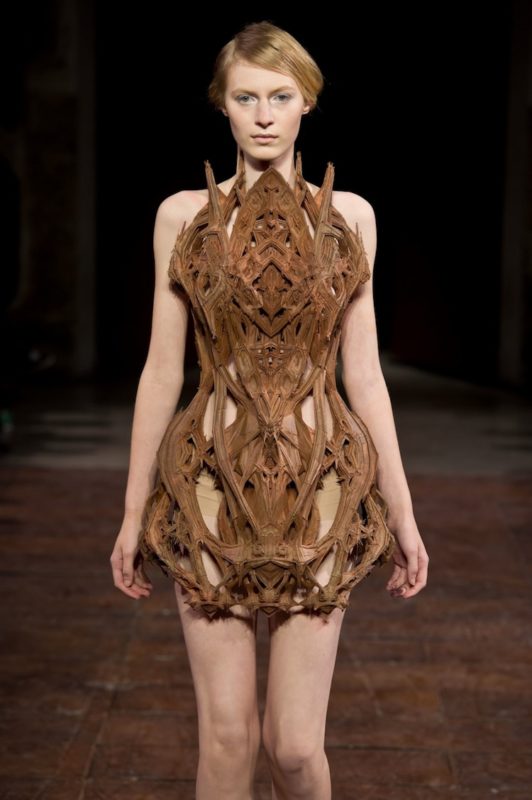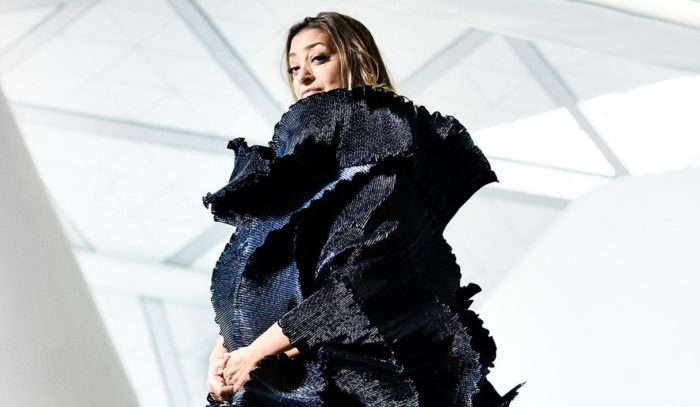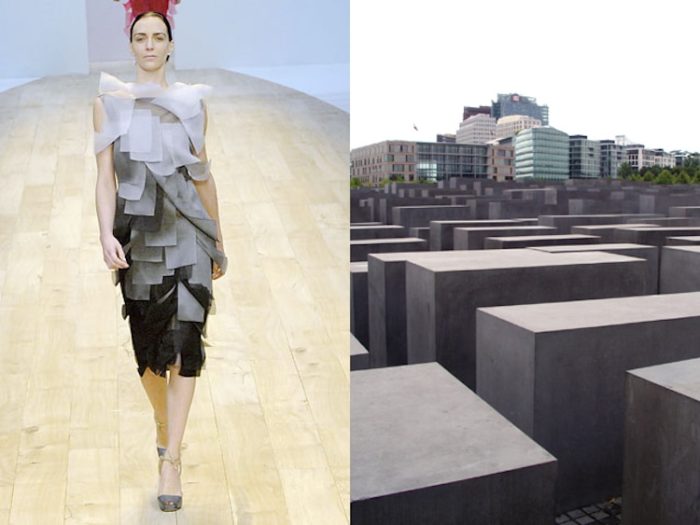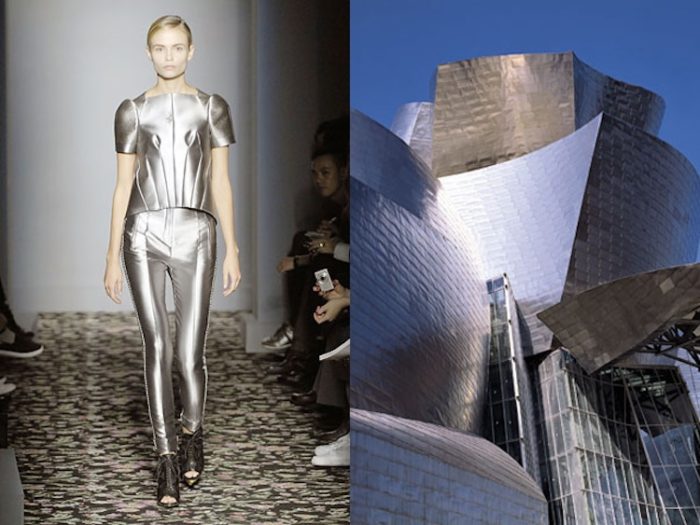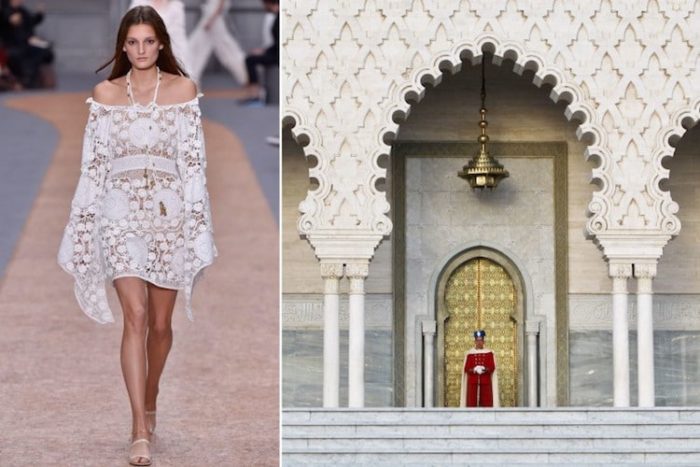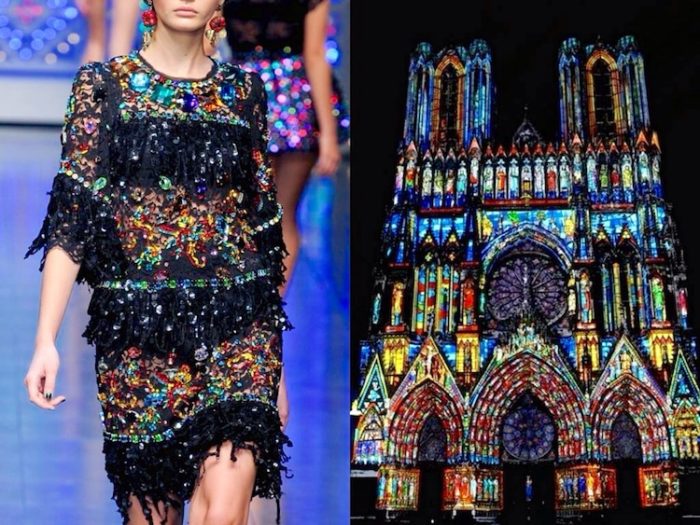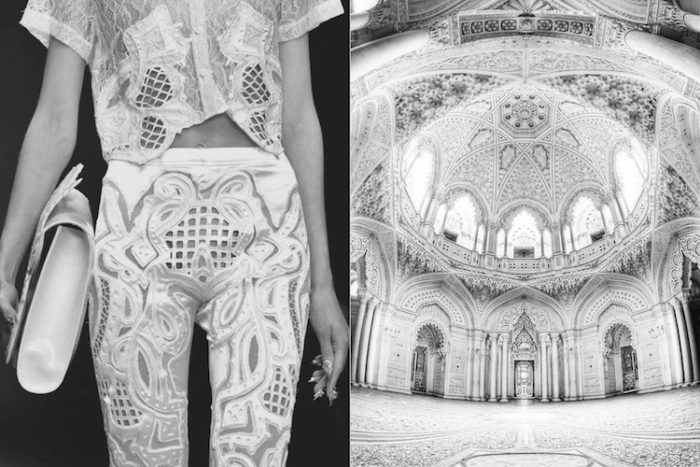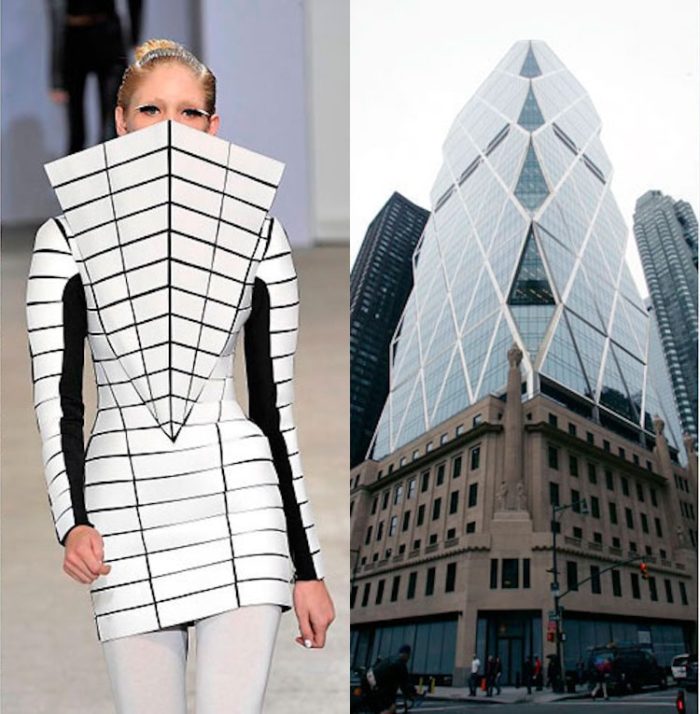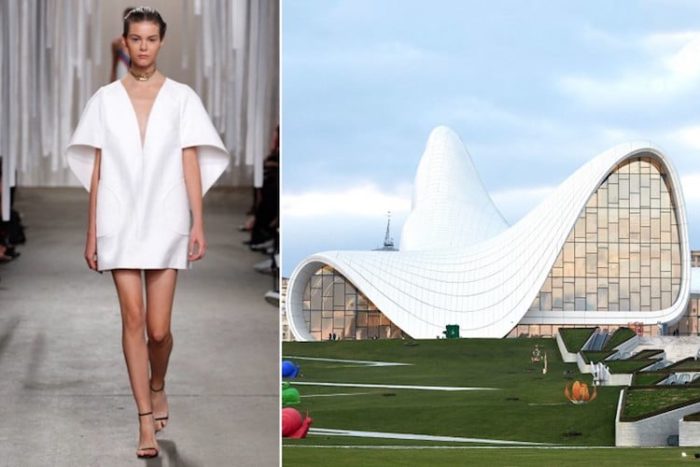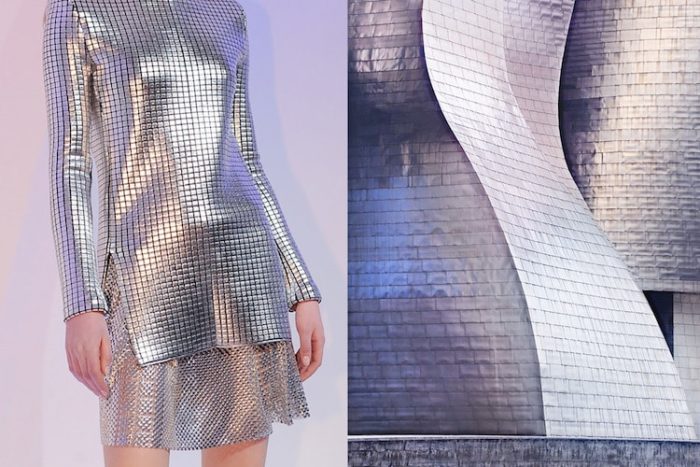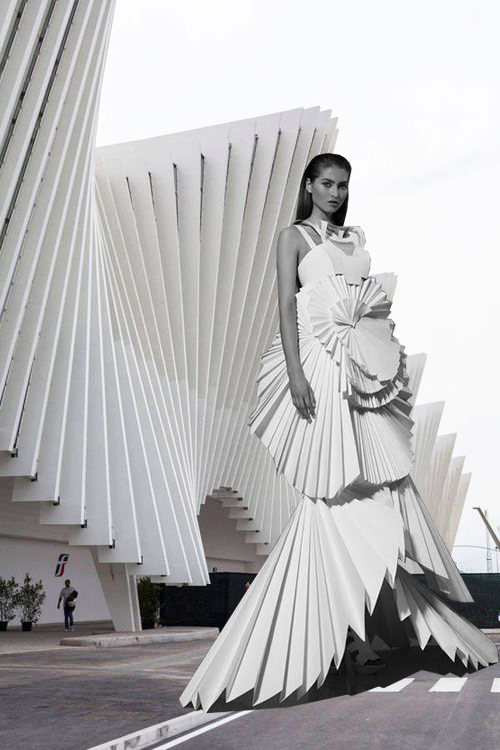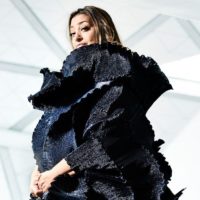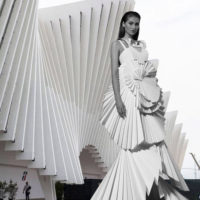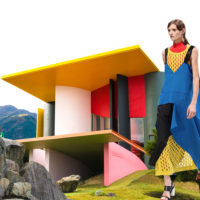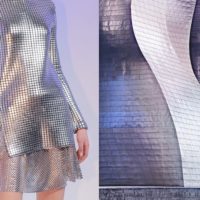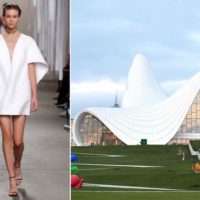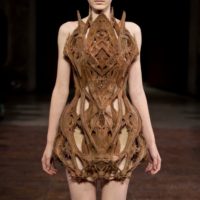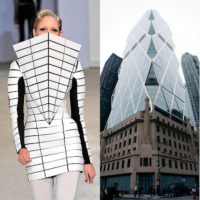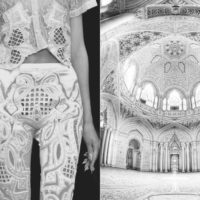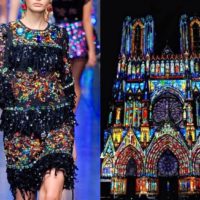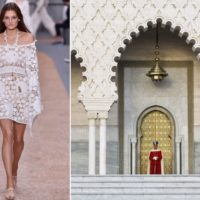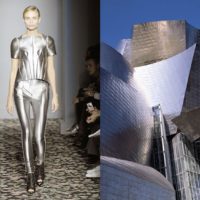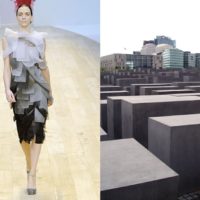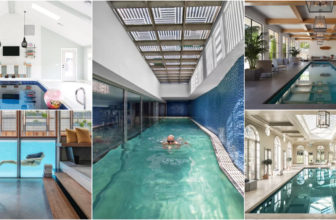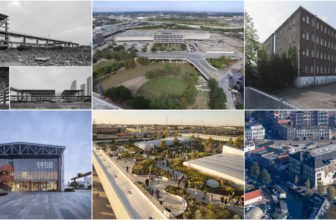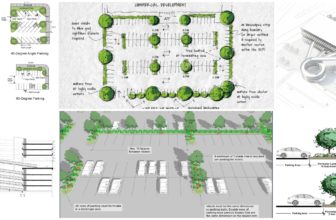Architecture, in its nature, is a jack of all trades and a master of all arts—it is in a never-ending back and forth conversation with the world, inspiring from trends and informing trends.
On the same side of prominent art streams, is fashion—a parallel industry to architecture that is deeply affected by trends and events, as well. At first thought, architecture and fashion seem to grow in separate directions, however, when these two industries collide, impressive art pieces are born.
Although architecture, like fashion, is affected by mass production, the former, as an inhabitable art form, is still more permanent than the latter, which is a wearable art form. At last, both are art applications; both use geometry, design principles, material trends, color theories, and structure techniques to create forms.
“Dressmaking is the architecture of movement.”
—Pierre Balmain
“Nothing is more important in a dress than its construction,” said Balmain, and he wasn’t alone. Gianfranco Ferré, another fashion industry star, was named “the architect of fashion” for his structural approach to fashion design.
Fashion designers who inspire from architecture employ their materials as building blocks to create a wearable shape in the same way that architects use concrete, cement, and glass to construct buildings.
Several other prominent fashion designers have been inspired by sophisticated structures. Architectural Fashion, also known as Wearable Architecture, is a term used to describe the merging of architecture and fashion. Since architecture became an open material for criticism and appreciation, architectural fashion has been a trend for many to experiment with.
Distorted shapes, sweeping angles, innovative materials, and meticulous construction are among the fashion halls of fame influenced by architecture. With a focus on the way architectural structures, shapes, and forms are developed, strong fashion design statements can be achieved. Fabrics are frequently pleated, folded, twisted, and layered as a building material to give a three-dimensional, architectural look.
Each fashion designer interprets their architectural inspiration in order to achieve their artistic expression. On the runway, a few extraordinary examples of Architectural Fashion made bold statements and left lasting effects.
Perhaps the first designer of such approach who comes to mind is the late Zaha Hadid, who, besides her mastery of architecture, mastered the arts of product design and fashion design—she incorporated aspects from her own structures into her fashion pieces. Moreover, fashion houses such as Balenciaga, Marchesa, and Chloé now include architectural references in their collections.
Here is some inspiring fashion-architecture creations side by side.
Viktoria Lytra, a Greek architect, has created a series of photos that examine the relationship and interplay between architecture and fashion under the name FormFollowsFashion.
“Architecture and fashion belong to the realm of creative arts, establishing a give and take relationship. Architectural identities are adopted by fashion in its affinity for experimental transformation. On the other hand, architecture is an ensemble of socio-morphological forces, drawing inspiration from the open-ended design of fashion scenery.”
-FormFollowsFashion
FormFollowsFashion looks at the unifying goal of architecture and fashion, which is to provide shelter for the human body, by emphasizing aesthetics as a common aspect in new approaches to clothing and building design. Lytra’s series plays with common geometric qualities such as people, pleats, curves, patterns, and twists to represent numerous movements and styles like minimalism, deconstructivism, and postmodernism.
- Image via Shilpa Ahuja
- Courtesy of FormFollowsFunction
- Courtesy of FormFollowsFunction
- Paco Rabanne Fall 2013 | Guggenheim Museum, Bilbao, Spain. (Image via Where I See Fashion)
- Milly Spring/Summer 2016 | Zaha Hadid, Heydar Aliyev Center, Baku. (Image via By Koket)
- Iris Van Herpen. (Image via Love and Robots)
- Gareth Pugh Spring 2009 | Sir Norman Foster, Hearst Building, NY. (Image via Only Dope Fashion)
- KTZ Spring 2013 | Castle of Sammezzano Leccio in Reggello, Italy. (Image via Where I See Fashion)
- Dolce & Gabbana S/S 2012 | Cathedral Notre-Dame de Reims, France. (Image via Where I See Fashion)
- Chloé Spring/Summer 2016. (Image via By Koket)
- Balenciaga Spring 2008 | Guggenheim Museum, Bilbao, Spain. (Image via Scarfe Unravels)
- Akris, Spring 2008 | Peter Eisenman, Holocaust Memorial, Berlin. (Image via Scarfe Unravels)


